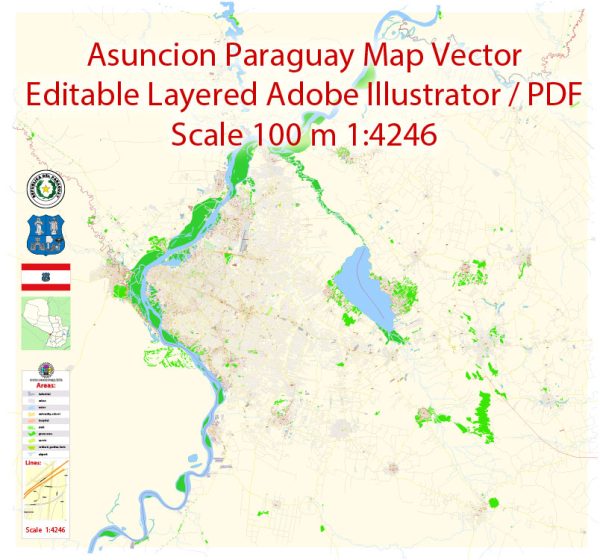The history of urban development in Asunción, Paraguay is a fascinating journey that spans several centuries. Asunción, the capital and largest city of Paraguay, has a rich history that has shaped its urban landscape. Here is a brief description of the key historical periods in the urban development of Asunción:
- Spanish Colonial Period (16th-19th centuries): Asunción was founded by Spanish explorer Juan de Salazar y Espinosa in 1537. It was established as a Spanish colonial settlement, and the city’s initial layout followed the traditional grid pattern, common to many colonial cities in the Americas. The city’s center was organized around a central square, Plaza de la Independencia, which remains a significant focal point today. During this period, many historic buildings and churches were constructed, contributing to the city’s architectural heritage.
- The Jesuit Missions (17th-18th centuries): Asunción was an important hub for the Jesuit missions in the region during the 17th and 18th centuries. The Jesuits played a significant role in the development of the city and the surrounding area, establishing settlements and mission towns that contributed to the urban and cultural development of the region.
- Independence and Modernization (19th century): Paraguay gained its independence from Spain in 1811, and Asunción became the capital of the newly formed republic. The 19th century saw significant changes in urban development as the city expanded and modernized. New avenues and public buildings were constructed during this period, reflecting architectural styles popular in Europe.
- The Chaco War (1932-1935): The Chaco War between Paraguay and Bolivia had a major impact on Asunción’s urban development. The war effort led to increased industrialization and infrastructure development, including the construction of roads and other essential facilities.
- 20th Century Growth and Urbanization: The 20th century brought further growth and urbanization to Asunción. The city expanded beyond its original colonial boundaries as it absorbed surrounding towns and neighborhoods. This period also saw the construction of modern infrastructure, including bridges, highways, and public transportation systems.
- Contemporary Development: Asunción has continued to evolve as a modern urban center. The city has faced challenges related to population growth, transportation, and urban planning. Efforts have been made to address these issues through the development of public transportation systems, the revitalization of historic districts, and the construction of new commercial and residential areas.
- Green Spaces and Riverfront Development: Asunción has worked on enhancing its green spaces and riverfront areas, such as the costanera along the Paraguay River. These developments have aimed to provide residents and visitors with recreational areas and promote a healthier urban environment.
- Cultural Preservation: Efforts have been made to preserve and promote Asunción’s historical and cultural heritage. Many historic buildings, such as the Palacio de los López and the Metropolitan Cathedral, have been restored and maintained.
Asunción’s urban development history reflects the city’s cultural, political, and economic evolution over the centuries. Today, it remains a dynamic and evolving city with a blend of historical charm and modern amenities.


 Author: Kirill Shrayber, Ph.D.
Author: Kirill Shrayber, Ph.D.